When I first tried this recipe for Asian pork shoulder in the pressure cooker, and I didn’t love the results. The flavor was great, but it was missing those yummy crispy bits you get when you slow braise pork. So I made it a couple more times, intensifying the flavors and adding a dry brine. In the end, we achieved Asian flavored braised pork success. Tender, moist, super flavorful, and with the perfect amount of crisp, this pork shoulder will definitely be a crowd pleaser.
Essential Asian Ingredients for braised asian pork
The list of essential Asian cooking ingredients needed to make a variety of favorite regional dishes is pretty consistent. This recipe has 3 of them cooked in the braise and 2 of them are used as garnishes.
- Soy sauce, or it’s gluten-free counterpart tamari, is the best way to both flavor and salt your dishes when creating just about any Asian dish. Tamari also helps to give dishes umami, the 5th basic taste, creating a warm and savory flavor
- Fish sauce has a slightly funky smell, but once you can get past the initial odor, you will be pleasantly surprised at the distinct Asian flavor it lends to most dishes. It’s used in a variety of ways, from stir-fry sauces to dressings and dipping sauces, it gives this pork shoulder another level of umami. My friend Mary taught me to always buy Red Boat Fish Sauce when possible.
- Fresh ginger is often used as an aromatic, similar to garlic, and gives the dishes an intense fresh flavor.
- Garnishes of lime and cilantro finishes the braised pork with a bit of bite and herbal earthiness.
 What is braising?
What is braising?
Braising is a method for cooking meats in a small amount of liquid in a covered pot, over low and steady heat. It is most often used with tough cuts of meat, like pork shoulders and beef short ribs, because it does a great job of tenderizing. Meat is most commonly seared first, then cooked in a very small amount of liquid, usually stock, or in this case, coconut water.
How to make Braised Asian Pork Shoulder
I started out by dry brining the pork shoulder in a 1:1 salt and brown sugar mix the night before. I’ve been a fan of brining meat in a salt water solution for awhile now, but have just recently become a fan of the dry brine too. This first step is totally optional, but I really think it helped flavor and tenderize the meat even more than braising alone. So if you have the time, I suggest going for it.
If you have brined the pork shoulder, unwrap it and brush off any excess salt and sugar. Heat 2-3 tablespoon of neutral cooking oil in large Dutch oven and sear the pork shoulder on all sides, about 3-5 minutes each. Add additional oil during the searing process if need be.
Next, nestle the onions alongside the pork, and add garlic, ginger, soy sauce and fish sauce to the pot. Cover and cook in a 350 degree oven for 2.5 hours. Add the butternut squash to the pot, cover and cook for an additional 30 minutes, or until butternut squash is fork tender and pork easily pulls apart.
Strain squash out of pot and set aside in a bowl. Remove the pork and allow to cool for a bit, then shred. Transfer shredded pork and squash to a serving platter or shallow serving bowl and pour a bit of the pan sauce on top for extra flavor.
Other helpful cooking tips
While you can braise directly on the stove-top, cooking in the oven is recommended since oven temps tend to remain more consistent. In order to braise the pork properly, you also want to make sure that you always braise with the cover on. Keeping the pot covered keeps the dish at a steady slow simmer temperature. It also traps the steam inside so as not to dry the pork.
You may be also wondering what temperature your pork shoulder need to reach to safely eat it? While most pork cooking recommendations suggest reaching an internal temperature of 160 degrees, you’ll likely find that this isn’t enough! Pork shoulder doesn’t truly “pull apart” until a higher temperature of about 190 degrees. So you can rest easy knowing that even if you don’t have a thermometer, if your pork pulls apart, it is nice and well cooked!
slow cooker or Instant Pot Directions For Braised Asian Pork
To cook in the slow cooker, start by searing the pork in a separate pot. Place the pork and all the ingredients, except the butternut squash, in the slow cooker. Cook on low for 8 hours, adding in the butternut squash after cooking for about 7 hours. If you’d like to achieve the crispy bits similar to braising, remove the pork from the slow cooker and pull apart. Place on a baking sheet and broil in the oven for about 8-10 minutes, watching carefully as not to burn. To evenly broil, make sure to stir the pork around 2-3 times during the broiling process.
To cook in the pressure cooker, follow directions above and cook on Manual High Pressure for 20 minutes. Carefully quick release the pressure and add the butternut squash. Cover and cook on high pressure for another 4 minutes, and quick release again. Strain butternut squash and set aside on a serving dish. Follow same broiling directions as above to achieve a more crispy pork texture.
Other Great Asian Inspired Recipes
- Instant Pot Beef & Broccoli
- General Tso’s Instant Pot Chicken
- Traditional Pho Ga – Vietnamese Chicken Noodle Soup
- Vegetarian Banh Mi Bowls
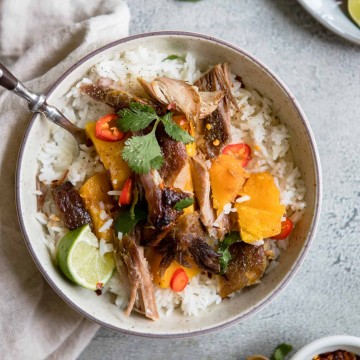
Braised Asian Pork
Equipment
- Dutch Oven
Ingredients
- 4-5 lb Pork Shoulder
- ¼ cup brown sugar
- ¼ cup Kosher salt
- 3 tablespoon neutral cooking oil more if needed for searing
- 1 large yellow onion cut into quarters
- 3 tablespoon fish sauce Red Boat recommended
- 3 tbsp soy sauce or tamari
- 3 tablespoon grated fresh ginger
- 3 garlic cloves minced
- 1.5 cups coconut water
- 1 medium butternut squash peeled and cut into large cubes
Instructions
- If dry brining pork ahead of time, combine the salt and brown sugar and coat the outside of the pork shoulder. Cover in plastic wrap and refrigerate overnight or for at least 8 hours.
- When ready to cook, remove pork from plastic wrap and brush off any excess salt & sugar.
- Heat 2-3 tablespoon of neutral oil in a large Dutch oven and sear each side of the pork shoulder until brown, about 3-5 minutes each side.
- Remove from heat and add onion, soy sauce, fish sauce, ginger and garlic to pot. Pour coconut water over the pork shoulder.
- Cover the pot and place in a 350 degree oven, and cook for 2.5 hours.
- Remove lid and add in butternut squash. Cover and place back in the oven, cooking for another 30-40 minutes, until butternut squash is fork tender and pork is easy to pull apart. Internal temperature should be about 190 degrees.
- Strain butternut squash from the pot and set aside on a serving dish. Remove pork and allow to cool till enough so you can handle it. Shred the pork and toss with the butternut squash. Drizzle some of the braising liquid on top for added flavor.
- Serve over Jasmine rice, rice noodles or lettuce, and garnish with cilantro, limes and chili flakes.

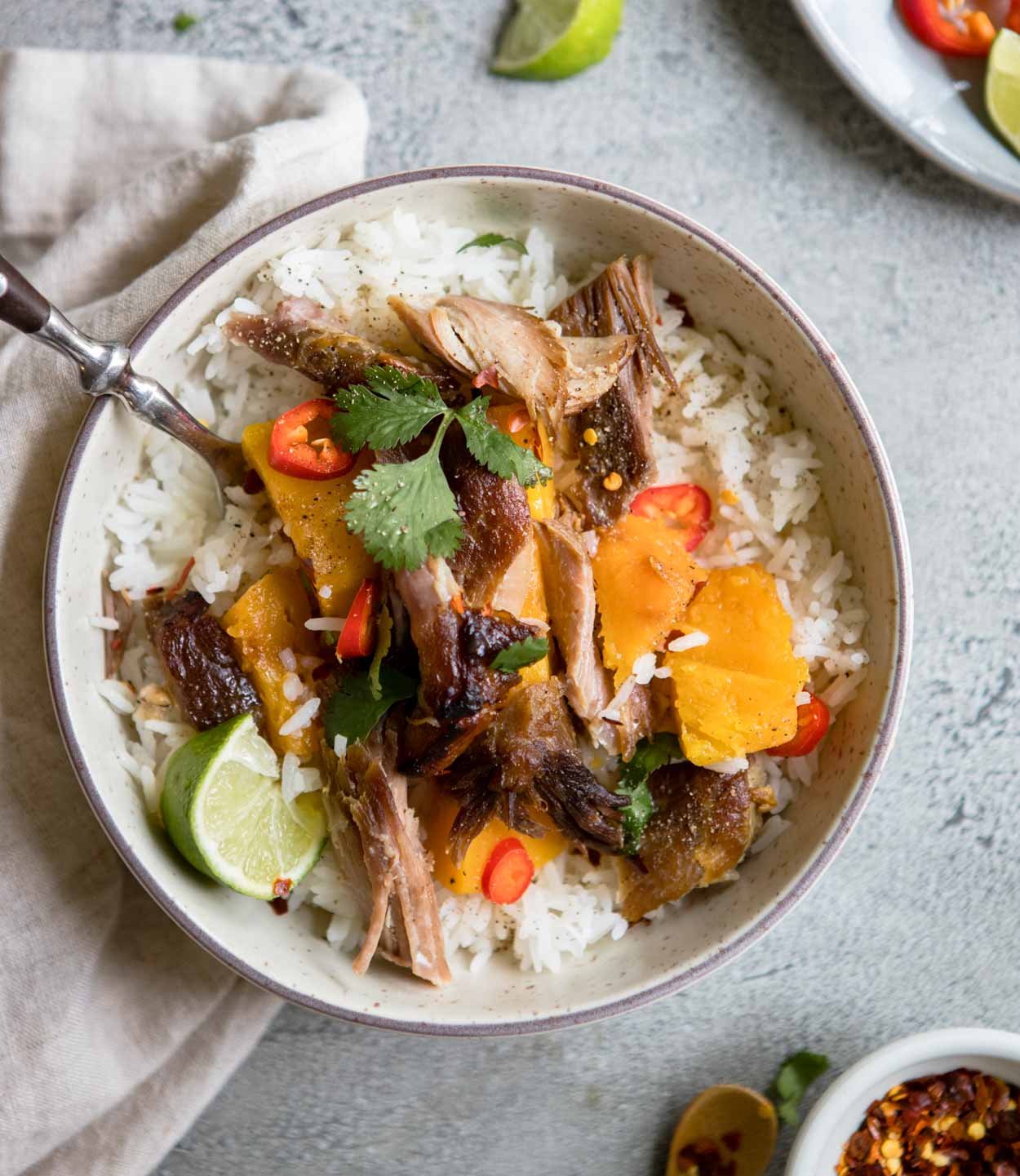
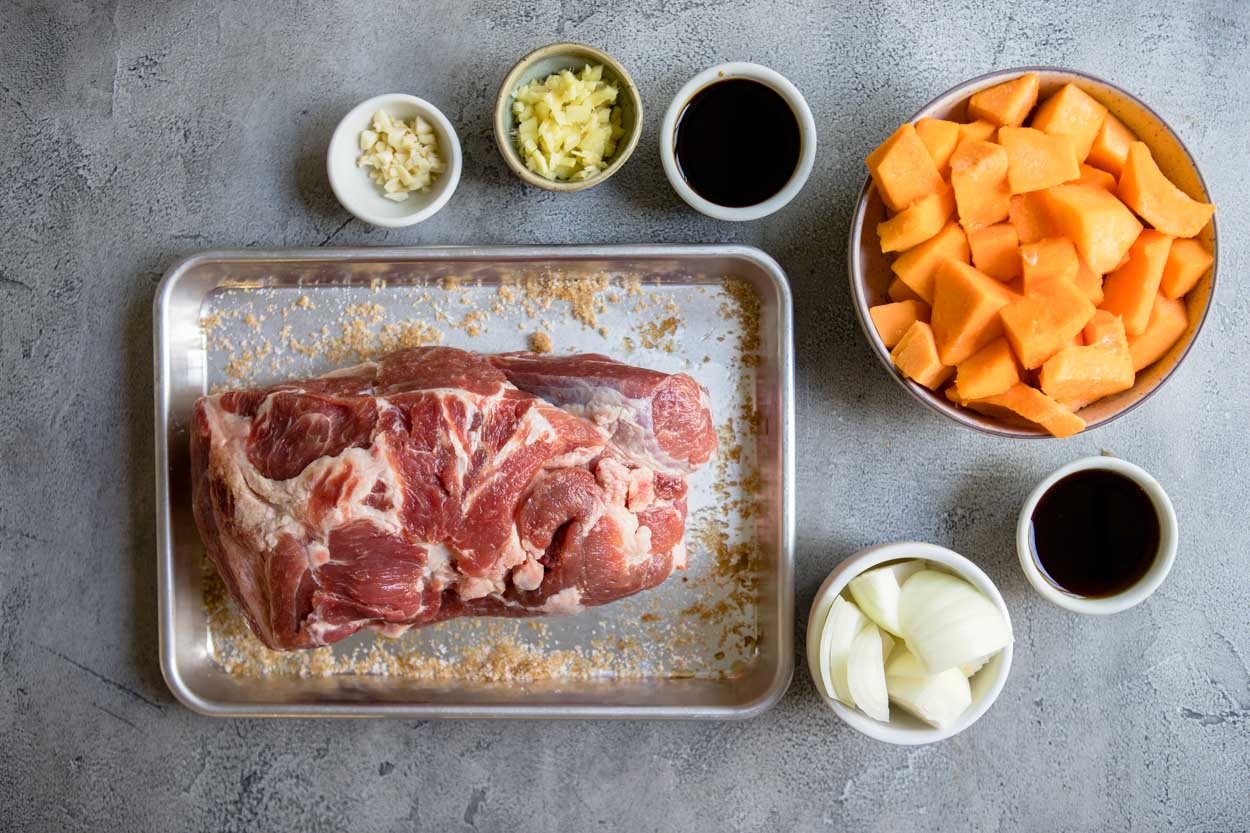 What is braising?
What is braising?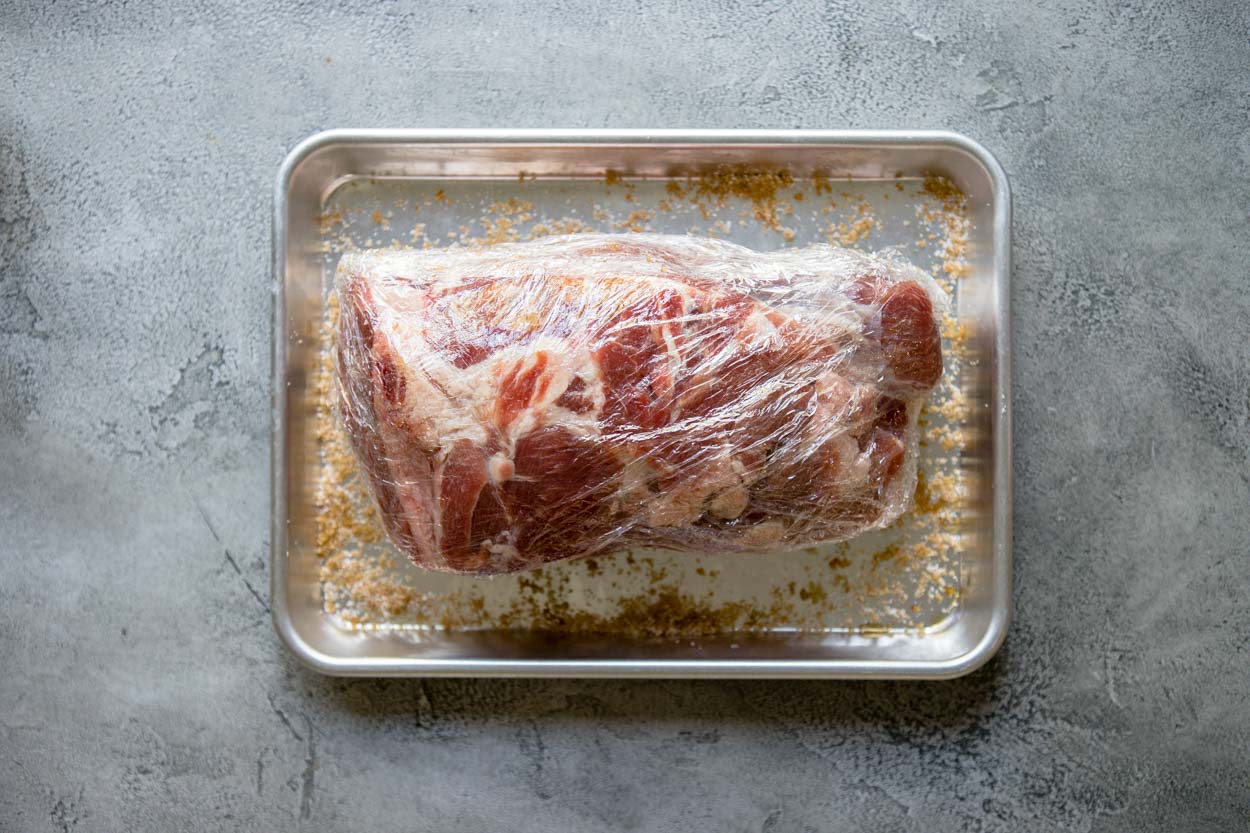
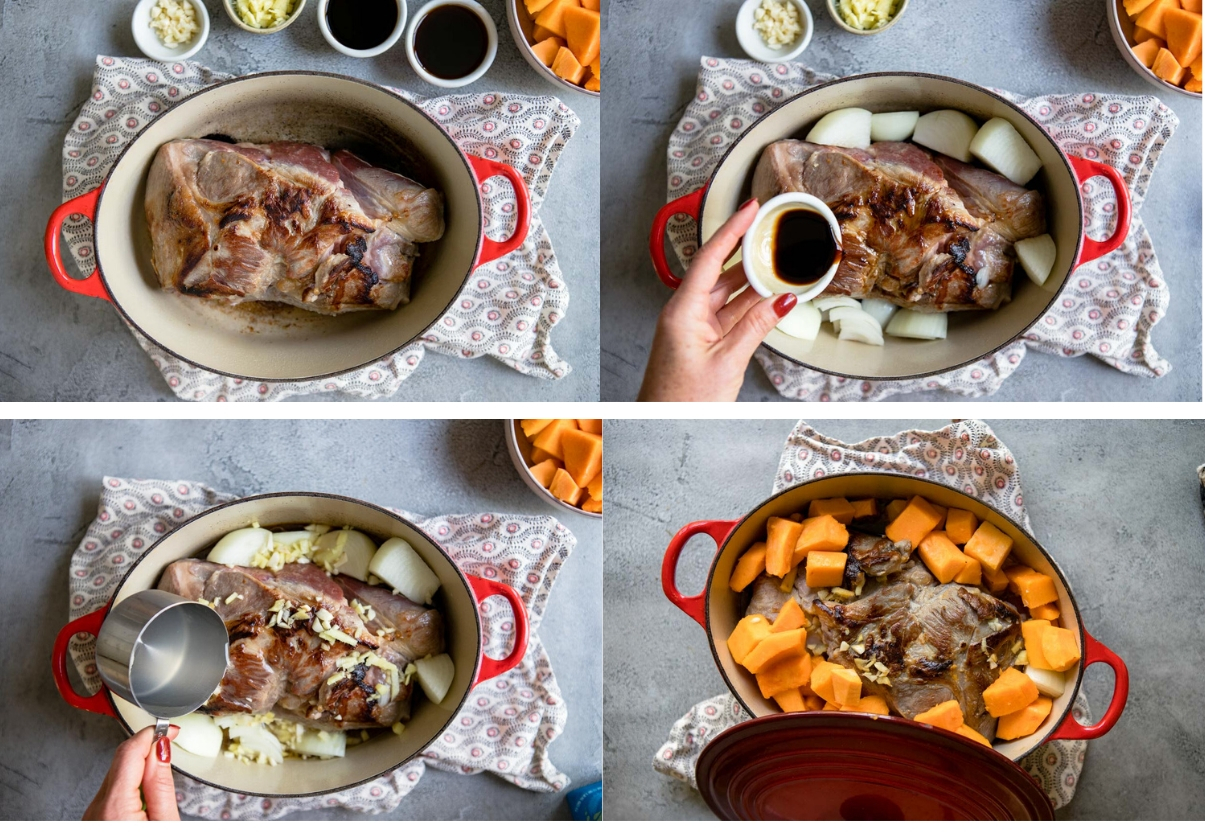
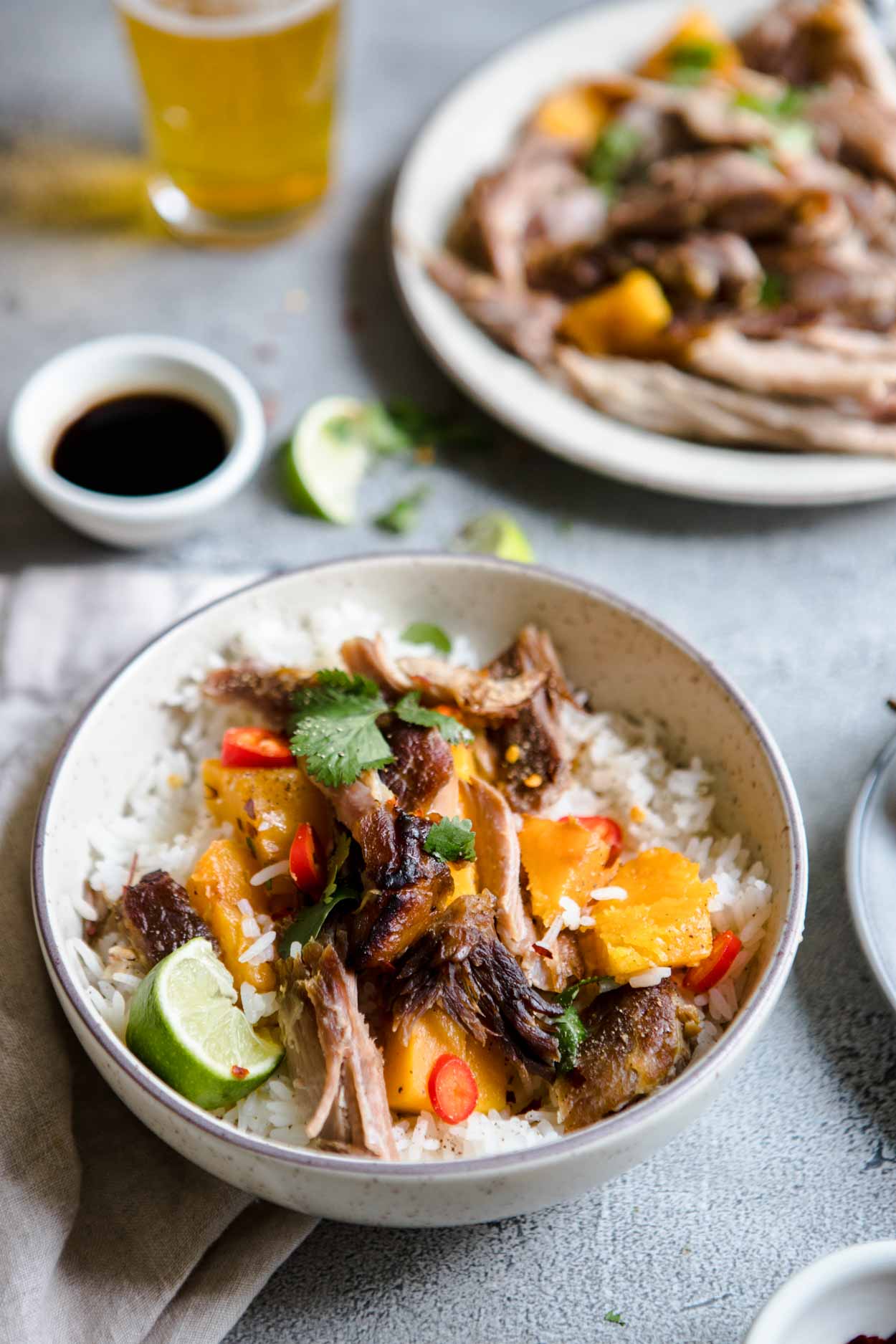
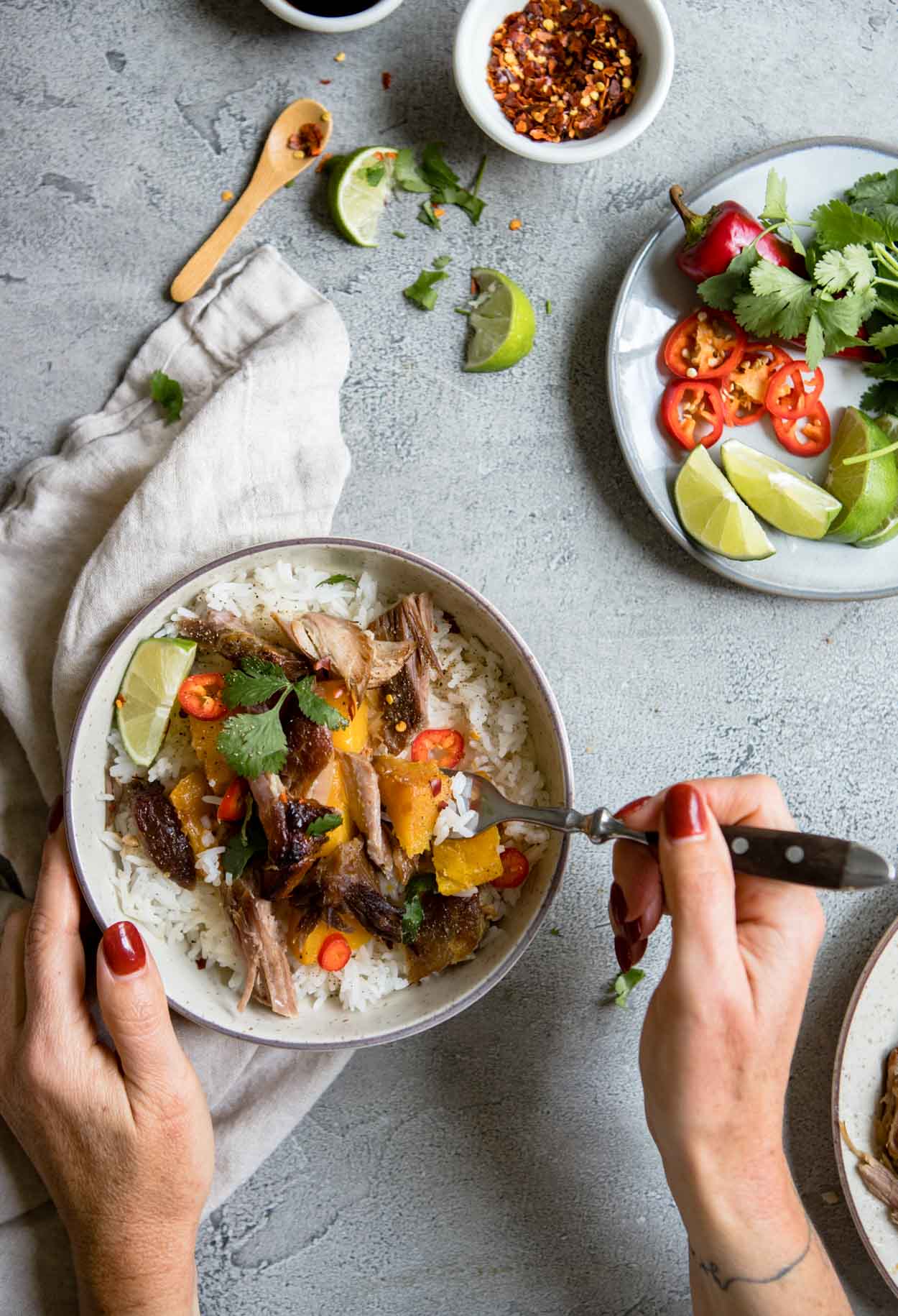
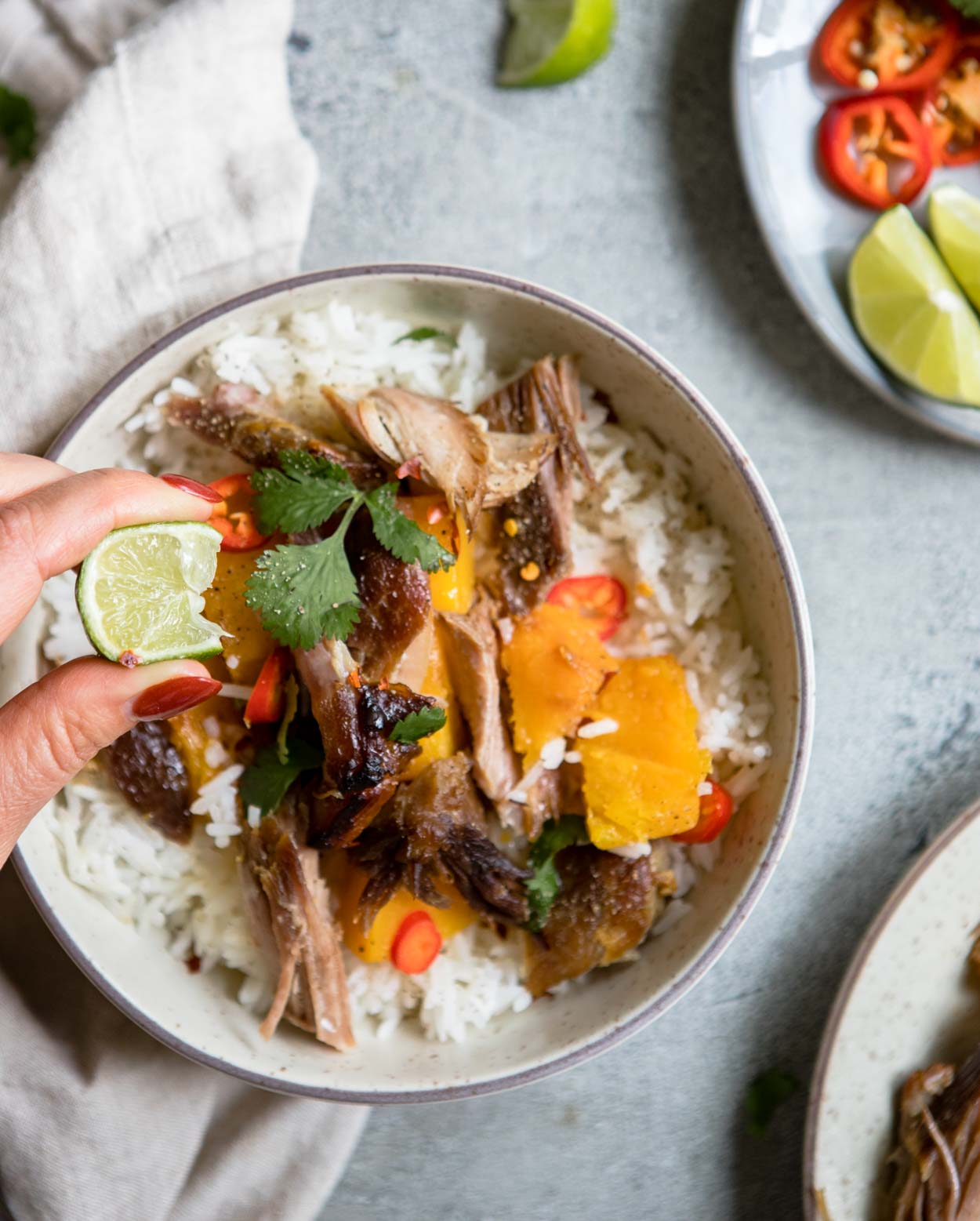




karri says
love this recipe! we are having it tonight, sans squash, as a banh mi type bowl!
Emily Bruno says
I’m already dreaming of making this again- it was so good!
Anna Kate Goshko says
This was so good. We loved it!
Lauren Nagel says
We loved it, thanks for the recipe!
Shelby Meyer says
Sooooo good! It’s also been a perfect freezer meal for us!
Lauren Grant says
Made this recipe this weekend and WOW! Greg and I loved it, this will definitely be on regular rotation.
Tawnie Kroll says
I sent this recipe to my mom and she made it for us for family dinner – AMAZING. Thank you!
Susie says
I love braised pork but hadn’t tried Asian style! This was amazing. Thank you for all your tips!